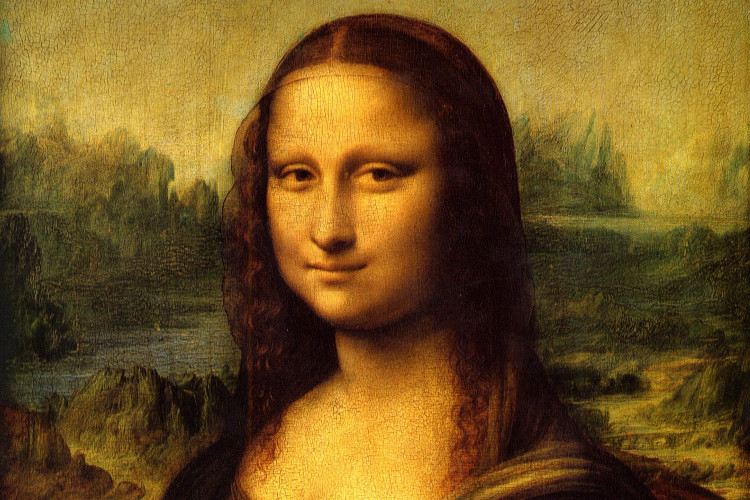Why do the characters in the painting always follow our eyes?
Of course, except for the ghost paintings haunted.
You must have seen the hairs and cheeks sometimes cold by the feeling that the paintings always follow me. This phenomenon has now become popular in modern painting, and has been explained for quite a long time. The image of her always looking after you and half-smile will probably become extremely scary for those who are weak. But no need to be afraid, because the answer will be right in this article.

Mona Lisa picture.
Before looking for an explanation, test this: ask a friend to stand still and always look straight ahead. Now move very slowly around that friend, always looking straight into their eyes. Does that look follow you? The answer is no, and since then, we can deduce this phenomenon only happens on photos, not real life.
The linear perspective is a concept that was born quite late in painting. Before this concept appeared, artists often used length and height to create a three-dimensional impression of their works . But they only stop at a relative level, when we only have a feeling of far-near, big-small elements. The ancient Egyptian writings can clearly illustrate the lack of space factor.

Objects can help us know how much the object is located away from the light source.
Painters also use both light and shadow to create an impression of depth. The object shadow can help us know how much the object is located away from the light source, and by taking advantage of this element, the impression of depth becomes even more pronounced.
Thanks to the perspective map and the interaction of light - darkness, contemporary artists can create lifelike images. But no matter how genuine, the paintings cannot exceed the two-dimensional space limit. Overall, all the effects to create a deep impression are tricks to trick the naked eye. And not only in depth, they also create other illusions, including the main phenomenon mentioned in this article.

All elements on the picture are static.
So what is the cause of this phenomenon? Remember, all elements on the picture are static , meaning they don't move. Remember to experiment at the beginning of the lesson, when you observe that your friend's eyes never follow him, because of all the factors: light, darkness and perspective are CHANGED. When you move away, some details will shrink and change brightness.
On the contrary, the elements on the picture did not change. Brightness, object shadow, perspective - ALL things. So if a picture sketches a person looking directly at you, that person will continue to look at it, even if you move away from the picture. Also, if the person is sketched to not look at you, even if you move away from the picture, the gaze will still avoid you.

When you move away, some details will shrink and change brightness.
In the 19th century, Jules de la Gournerie was the first to prove this phenomenon based on mathematical formulas. But it was not until 2004, a group of researchers actually succeeded when used experimentally on a mannequin. By rendering and mapping points on mannequins at different viewing angles, they found that the set of locations of those points did not change, if their original position be fixed on the computer. It is also the rule applied by artists on paintings to create very vivid impressions.
After all, if you have the right to look at a woman in a painting, why can't she look back at you?
- Restoring talents to paint with eyes
- How to train pure eyes
- Strange secret hidden behind 7 'haunted' paintings
- Electronic eyes look through space
- 19 most obsessive eyes in the history of world photography
- Art of painting such as photos
- Painting illusion reflections makes it difficult to distinguish the fake
- Da Vinci's 60 USD painting is auctioned at 100 million USD
- The 10-year-old prodigy of painting makes money like water
- Fifty facts about eyes
- Casually discovered treasures worth more than 200 billion in the kitchen of a French lady
- Robot painting
 'Fine laughs' - Scary and painful torture in ancient times
'Fine laughs' - Scary and painful torture in ancient times The sequence of numbers 142857 of the Egyptian pyramids is known as the strangest number in the world - Why?
The sequence of numbers 142857 of the Egyptian pyramids is known as the strangest number in the world - Why? History of the iron
History of the iron What is alum?
What is alum?